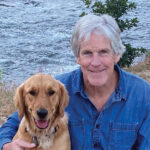From the Editor - March/April 2019
Tim Kiesling
One of the big questions we’ve wrestled with since the launch of this magazine 20 years ago came from a brilliant theologian at MIT’s Artificial Intelligence Lab named Anne Foerst. Dr. Foerst began her doctoral dissertation in Germany believing that “strong” artificial intelligence (a real thinking machine) was impossible, but decided over the course of her thesis that strong AI was on its way—and so she joined the AI Lab to work on robots. Foerst introduced us to Kismet, the first emotionally responsive robot, in 2001. She also raised the big theological question: At what point should we baptize a robot like a baby?”
Anne and I tried to write a book to answer the question, and perhaps the most destabilizing realization for me was that many AI researchers didn’t use the word consciousness. To some, “I think, therefore I am” represents a clunky old technology. Getting rid of the “I” will achieve a pure “think” that will be infinitely faster.
I grew up Catholic, and bodies are so important that we resurrect them. I also grew up thinking human consciousness was expanding at the rate AI actually is today. The Parapsychology Research Group gathered in our living room in Los Altos, California, so I met people who could seemingly bend spoons using only their minds and draw top-secret Soviet missile bases from a shielded room in Palo Alto. One childhood friend studied distant healers who could help cure AIDS and even peer into the future. This was also the start of the Institute for Noetic Sciences—a center for Psi research that would be led by a pioneering anthropologist, an old friend and former S&H columnist, Marilyn Schlitz PhD.
So I felt a certain wistfulness when, out of the blue, Marilyn sent me her interview with Sophia, a beautiful, charming, and empathetic young android. (Page 24) Sophia runs on today’s “weak” AI. (The strong stuff is probably still five–10 years away.) Nevertheless, I think the interview marks a watershed: a consciousness researcher making friends with an android that may, in the decades to come, become her caregiver. Marilyn’s OK with that, which is more than I can say for myself. (An Alexa was given to me that I haven’t taken out of the box.) I think we’re entering the final countdown to answering “Humanity’s Most Uncomfortable Question.” (28) Alas, the punchline: “I think, therefore I’m slow.”
What to do? Cal Newport’s “7 Tales of Digital Minimalism” is one place to start. (46) We don’t have to keep up: Happiness is using our own values to set the pace. Also helpful is working on the presence of mind described by mystic Mirabai Starr in “Showing Up for What Is.” (52) Life will likely change as much in the next 20 years as it has in the last thousand, so “showing up for what is” could be the most interesting ride in human history. Maybe strong AI can solve the “Paradox of Being Holy”—a world that supports all of us in ways we currently can’t imagine. (42)
All that abstract thinking brings us back to this moment: the “I” that is writing/reading this. Those 10 quadrillion calculations-per-second going through my/your head (yes, we are that fast!) are a result of what Sara Gottfried MD calls the Brain Body Connection. (58) Maintaining a strong I is complicated, but it’s essentially a matter of blood flow to the brain, which comes from movement, diet, hydration, healthy gut bugs, detoxing, and sleep. The good news, I’ve learned, is that brain fog lifts fast once you focus your Brain Body on the task. Try the 40 days! Go it alone or create a Brain Body Book Club. (34) Either way, you’ll feel calm, energized, and present for whatever the future brings.
Stephen Kiesling
steve@spiritualityhealth.com


